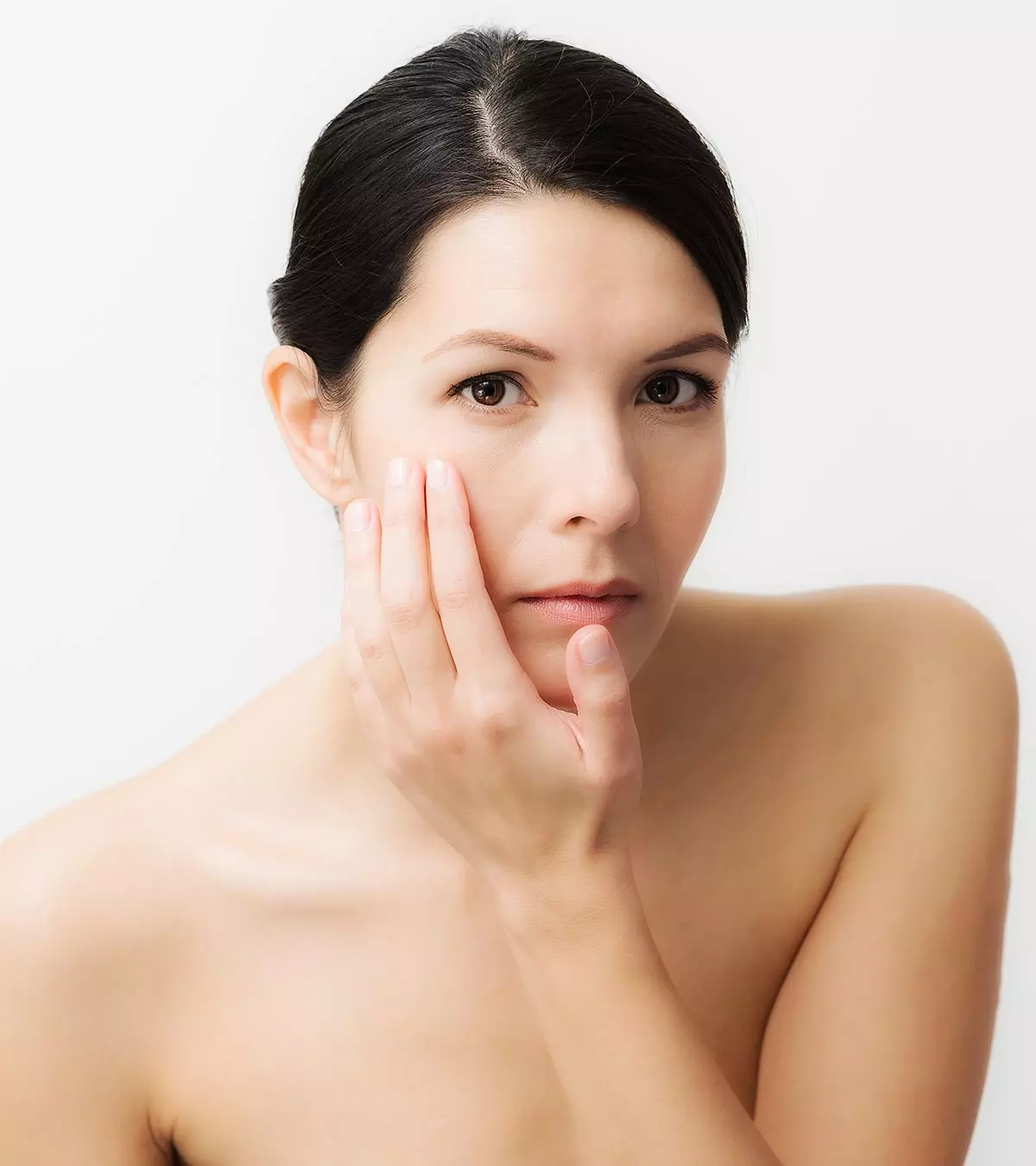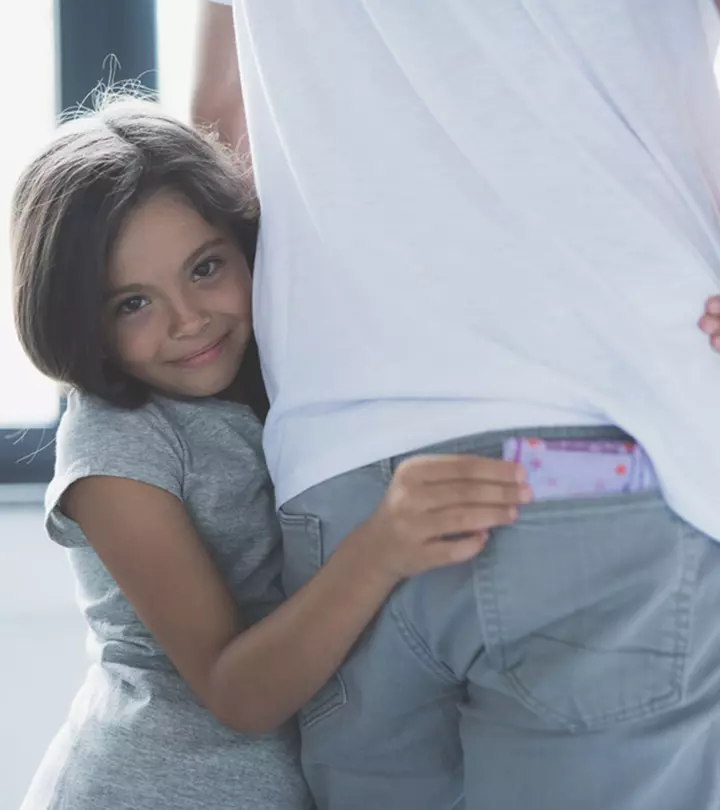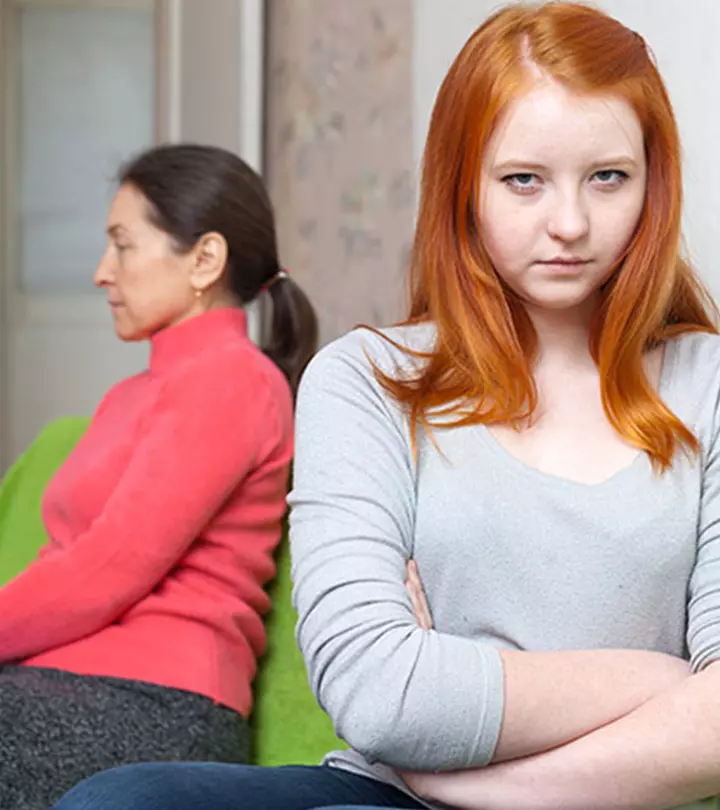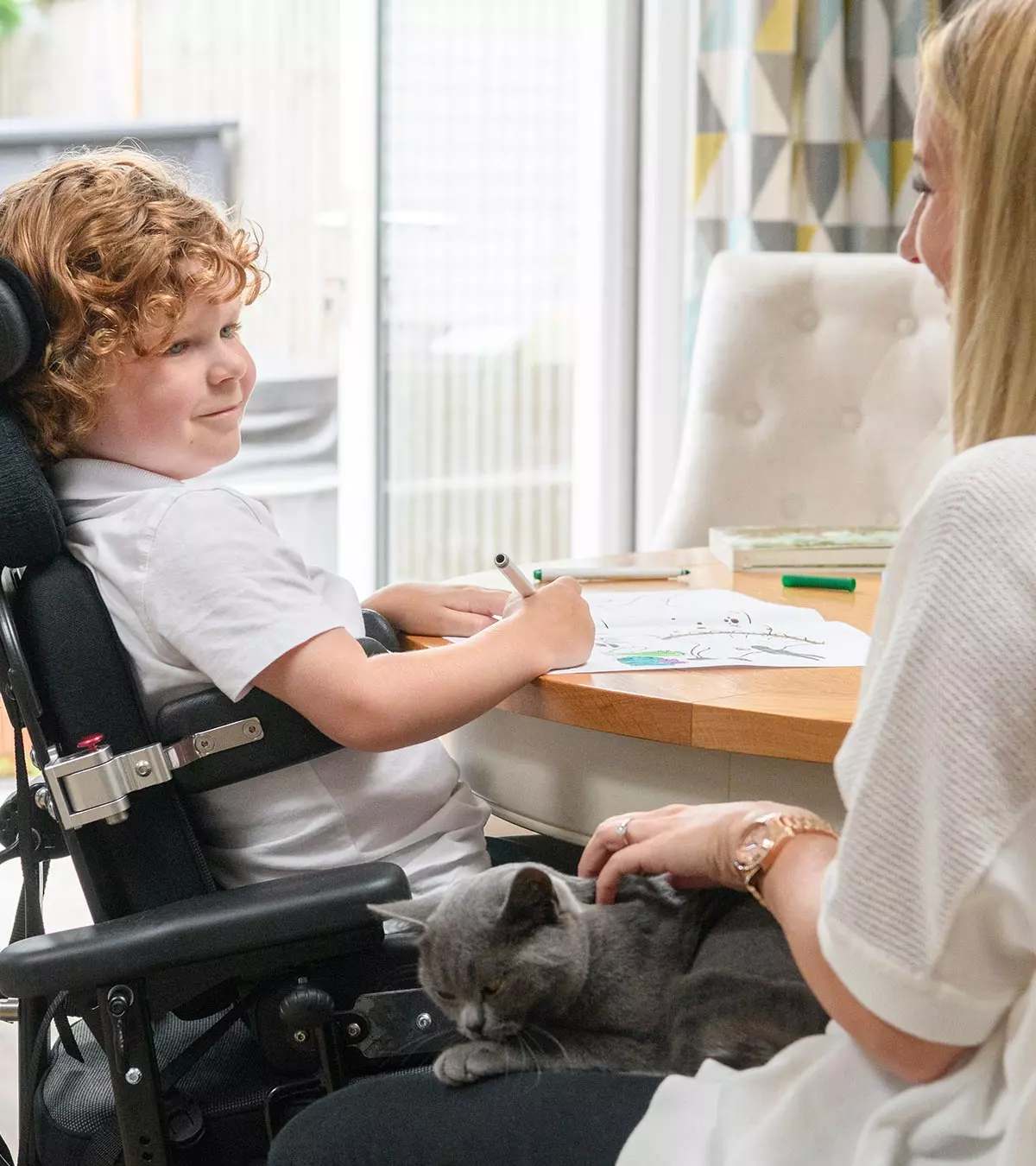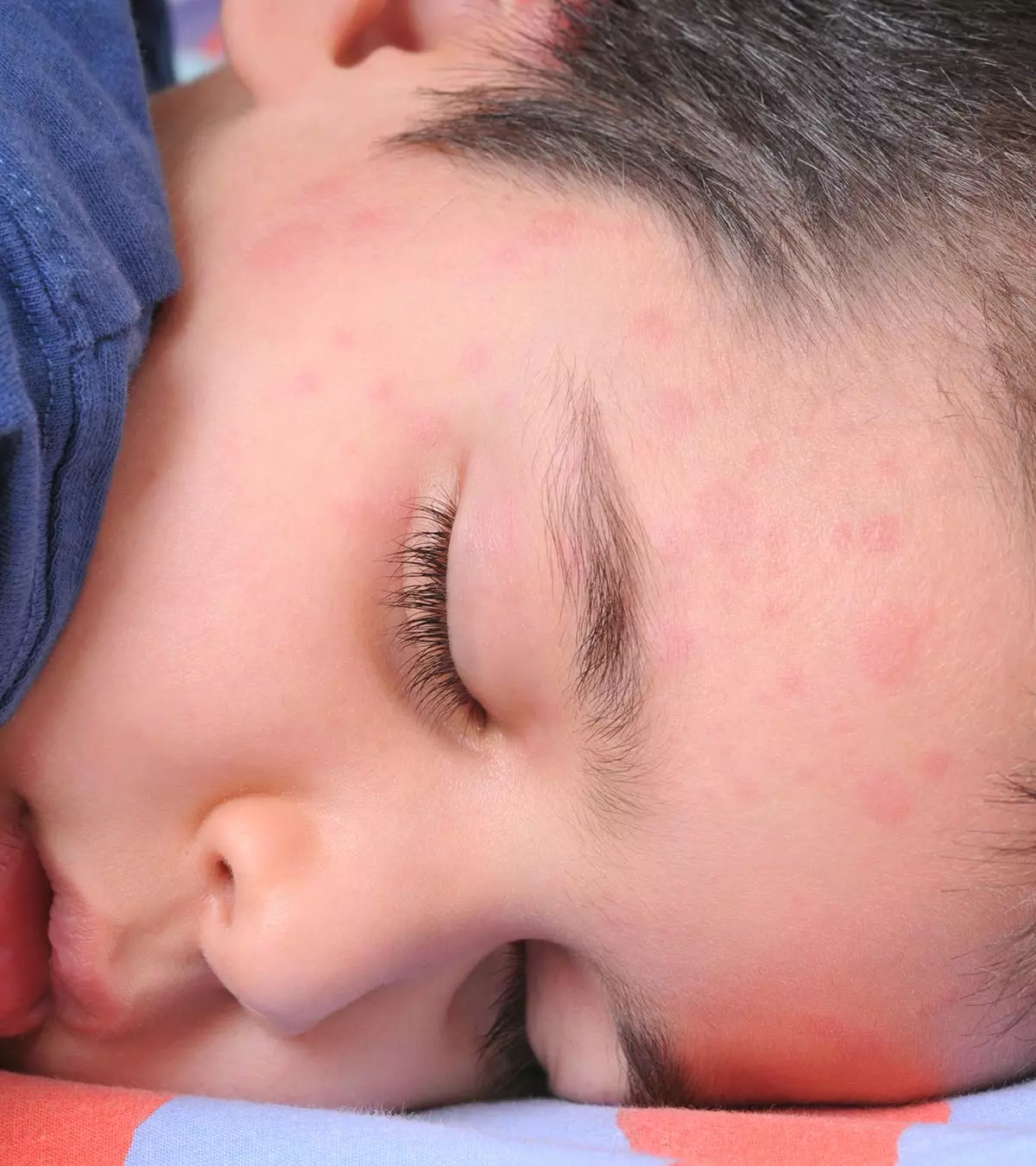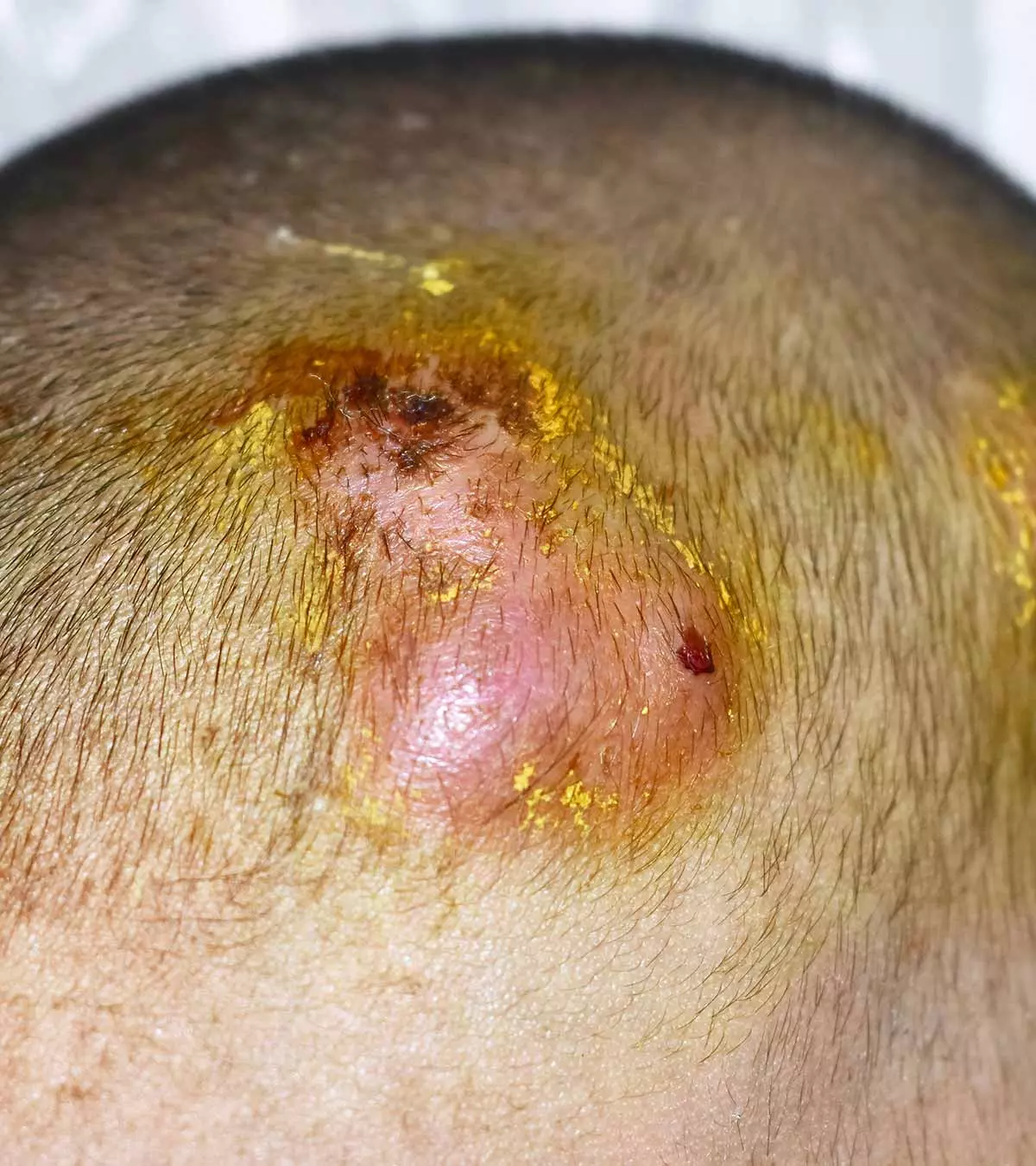
Image: ShutterStock

Folliculitis in children is when a child’s hair follicles get inflamed due to an infection. The infected follicles usually have an acne-like appearance and may cause slight pain and redness. Folliculitis is most commonly caused by bacteria and may resolve spontaneously within seven to ten days. However, the infection could sustain for longer in some children, causing boils to rise. In such cases, the child may require medications (a course of antibiotics) to manage the condition (1). The common areas where the infection occurs are on the scalp, legs, arms, and buttocks. Keep browsing as we tell you about the possible causes, diagnoses, and treatment options for folliculitis in children.
Key Pointers
- A folliculitis infection in children can be identified by the formation of painful, pus-filled bumps on the skin.
- The doctor may conduct a physical examination and test the discharge.
- Oral medications and antiseptic creams are the primary treatment sources for folliculitis.
- Taking precautions when outside and a few home remedies such as applying aloe vera gel or tea tree oil may help prevent and alleviate the symptoms of folliculitis.
Symptoms Of Folliculitis In Children
Folliculitis in children looks like red bumps or rash and could be mistaken for acne. These red bumps would resolve or gradually turn into pus-filled boils known as furuncles.
When a group of hair follicles gets infected and forms large painful swellings with multiple pus-discharging boils known as carbuncles, it is an indication that the infection has spread to deeper layers and might even cause fever (1). In addition to furuncles and carbuncles, the type of folliculitis varies with the causative microorganism.
Some of the symptoms of folliculitis include (1):
- Red pimples with a hair at the center
- Pimples predominantly on the arms, legs, buttocks, and back
- Gradual development of pus in the pimples
- Fever and an upset stomach in some rare cases
What Does Folliculitis Look Like, And Is It Contagious?
Folliculitis is often mistaken for acne. Here are a few images to help you identify this condition.

Since folliculitis is caused due to microbial infections, it could spread through personal contact or sharing of towels, clothes, and other personal accessories. However, this is usually more common when the infection has turned into furuncles or carbuncles (2).
Causes Of Folliculitis In Children
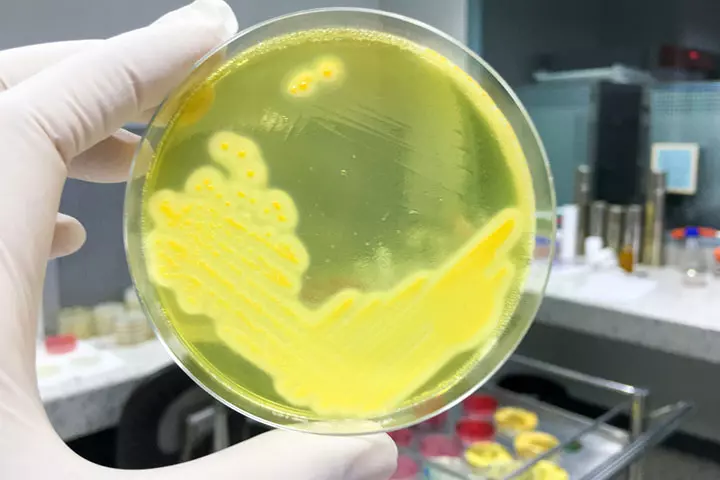
Folliculitis is usually caused by bacterial infection involving the bacteria Staphylococcus aureus. However, the infection can also occur due to viruses, such as herpes, and fungi, such as yeast (3) (4).
Many microorganisms dwell on the surface of the human skin without causing any harm, but when the skin gets bruised or cut, these microorganisms may enter the skin and cause infections, such as folliculitis.
Children often play outdoors and get hurt, which could be one of the reasons for them to get folliculitis. One study found that 25% of high school athletes who participated in football and basketball developed furuncles (5). Children with compromised immunity may also be at a greater risk of the infection.
 Quick fact
Quick factHere are some other ways your child could get folliculitis (4) (6).
- Wearing tight-fitting clothes that might cause friction and damage the skin
- Swimming in pools that are not treated with chlorine
- Excessive scratching or skin injuries
- Blockage of hair follicles due to certain skincare products
- Plucking the hair, especially in children who have densely curly hair
- Oily skin, which may cause blocked hair follicles
“Mary, a mother, shares her experience of how her daughter Erin exhibited enhanced sensitivity to skincare products such as soaps. She explains, “Almost every baby soap we tried left her with rashes…So we tried baby washes… I noticed a few suspiciously red lumps on her scalp. To make the long story short, they grew bigger and increased in number, and with Erin’s incessant scratching, we finally ended up with folliculitis (i).”
 Point to consider
Point to considerDiagnosis Of Folliculitis In Children
Physical examination is usually enough for a doctor to diagnose the condition. In cases where there is a discharge from a boiler pustuleiA painful bump filled with pus that develops under the skin when bacteria infect and irritate a hair follicle , the doctor may send the discharge for laboratory culture to determine the infective microorganism.
Treatment For Folliculitis In Children
In immunocompetentiHaving a healthy and properly working immune system children, folliculitis tends to go away on its own in seven to ten days.
But, if it turns into boils or carbuncles, then you might need to take your child to a doctor.
Here are the available treatment options for folliculitis in children (1).
- Topical antibiotics: A doctor may recommend topical antibiotics if the infection is mild to moderate. These medications are directly applied to the affected area and effectively treat bacterial folliculitis caused by Staphylococcus aureus or other bacteria.
- Topical antiseptics: Gels, soaps, or solutions might also reduce the infection. Antiseptics such as benzoyl peroxide can help cleanse the skin and reduce the number of bacteria on the surface, minimizing the risk of further infection. Using an antiseptic soap during bath time can be beneficial in preventing folliculitis from spreading to other areas.
- Oral antibiotics: In more severe cases, or if the folliculitis leads to boils, carbuncles, or causes systemic symptoms like fever, oral antibiotics may be necessary. Dicloxacillin, cephalosporins, or cefadroxil are commonly prescribed to treat more widespread infections. Oral antibiotics are particularly effective when the infection has spread beyond a localized area or when there is significant inflammation.
Home Care For Folliculitis In Children
Home care may help in reducing the healing time and relieving the symptoms of folliculitis.
- Warm compress: Apply a warm compress on the sores for 20 minutes. It might help reduce the inflammation and soothe the itch. Repeat it three times a day (8).
- Gentle cleansing: Carefully wash the affected area with antibacterial soap like Dial or Cetaphil to help keep the area clean and prevent further infection. After washing, gently wipe the skin dry without scrubbing (7).
- Comfortable clothing: Dress your child in loose, cotton clothing to reduce skin friction. Avoid tight clothing, especially jeans or athletic wear, which can irritate the follicles and worsen the condition (7).
- Change clothes frequently: Ensure your child wears fresh clothes daily and wash them with disinfectant to help prevent bacteria buildup (8). Recalling a case from her practice, pediatrician Dr. Supriya Wakchaure says, “A six-year-old girl presented with recurring folliculitis on her arms and legs. Her mother shared that she often wore the same sports leggings after activity without changing or showering immediately. The flare-ups were significantly reduced after discussing the importance of hygiene, fabric choice, and routine bathing after outdoor play. The family also switched to hypoallergenic laundry detergent, which helped prevent further irritation.”
- Avoid scratching or squeezing: Remind your child not to scratch or squeeze the affected areas. Doing so can spread the infection and delay healing (8).
 Quick tip
Quick tip
Natural Remedies For Folliculitis In Children
You may consider a few natural remedies to relieve the symptoms of folliculitis in children. Do note that there are inadequate scientific studies to prove the effectiveness of these remedies, especially among children.
- Tea tree oil: It is said to have antimicrobial properties that could help clear the red bumps and pus due to folliculitis. However, make sure you dilute it with other oils, such as coconut or almond oil, before applying on your child’s skin (9).
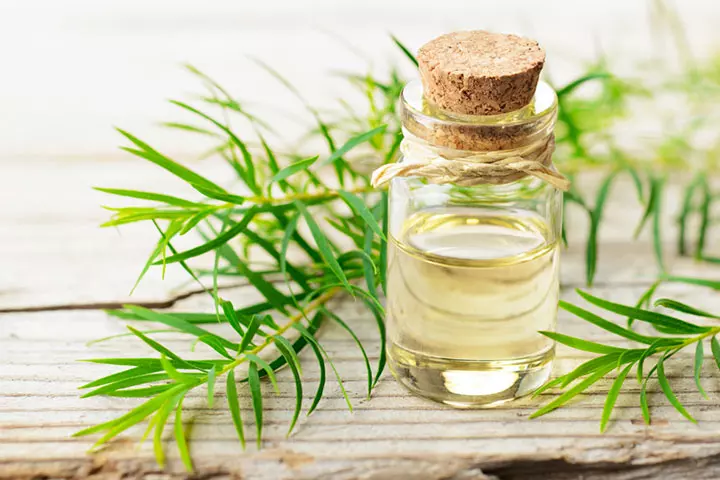
- Neem: This is a plant that is known for its antibacterial, antiviral, and antifungal properties. You can boil neem leaves in water and apply the water or make a paste of the leaves and apply it on the affected area. Repeat it thrice daily (10).
- Apple cider vinegar: Studies note that apple cider vinegar has antimicrobial effects on Staphylococcus aureus bacteria, which is responsible for folliculitis. Mix one part of vinegar in two parts of water, and dab the solution on the affected area. Leave it for ten minutes and rinse off (11).
- Aloe vera gel: As aloe vera is known for its anti-inflammatory and antiviral properties, it might help reduce the itching and inflammation due to folliculitis. Extract the gel from the aloe vera plant and apply it to the infected area. Leave it for ten minutes and rinse off with warm water. Do it once or twice a day until the inflammation subsides (12).
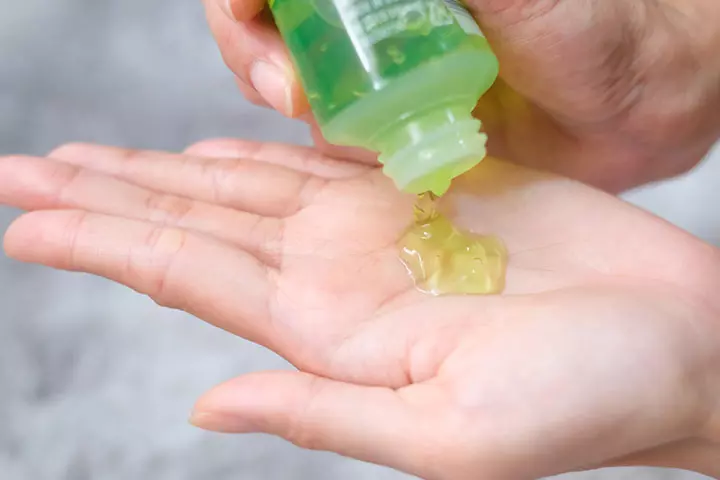
- Turmeric: Research has found turmeric to be effective against the Staphylococcus aureus bacteria responsible for the Staph infection in kids (13). Mix turmeric powder in water, and make it into a smooth paste. Apply it on the affected skin. Leave it for 20 minutes and rinse off. Repeat this two to three times daily.
If the folliculitis has progressed into a furuncle or carbuncle, pus or blood oozes from the boil/acne, or the child has developed fever, then consult a doctor before trying any home or natural remedies. According to the Nationwide Children’s Hospital you should consult a doctor “If there is a large, painful, red area of skin that feels hard or has a lot of drainage (7).”
Can You Prevent Folliculitis In Children?
Maintaining proper hygiene and adopting precautionary habits can help prevent folliculitis in children. Here’s how (7):
- Encourage children to wash their hands after playing outside to prevent the transfer of the microorganisms on the skin.
- Clean wounds with antiseptic lotion and apply bandages. Never keep the wounds open.
- Always clean and disinfect the bathtubs at your home.
- Make sure the water in the swimming pool is treated with chlorine before allowing your children into it.
- Keep your children away from adults who might have folliculitis.
- If your child has folliculitis, do not mix their towels, blankets, and clothes with others.
- Encourage teenagers never to share their shaving razor with others. Also, teach them how to keep the razor clean.
Frequently Asked Questions
1. Can poor diet cause folliculitis in children?
An imbalanced diet may increase the risk of folliculitis. It has been found in an animal study that a high-fat diet can flare up or cause folliculitis (14).
2. Is sunlight good for folliculitis in children?
No. Instead, sunlight exposure may cause a rare type of folliculitis, between 4-24 hours after exposure, known as actinic folliculitis (15).
3. What is the difference between impetigo and folliculitis?
Impetigo is indicated by the lifting of the topmost layer of the skin in the form of a pus-filled sore, typically seen on the face, while folliculitis arises around the hair follicles (16) (17).
4. Are there any long-term effects of folliculitis on a child’s skin?
In most cases, Folliculitis in children may be cured with treatment and not have long-term effects. However, if the condition is severe and left untreated, it may rarely cause permanent hair loss and scarring (18).
5. Can a child with folliculitis continue to attend school or daycare?
Anecdotal evidence suggests that it is best to allow the child to rest for a few days before returning to school to prevent the spread of infection. However, it is best to consult your physician before making any decisions.
6. What should parents do if their child’s folliculitis does not improve with treatment?
It is best to take the child back to your doctor to get an assessment of the child’s progress. This way the doctor may be able to opt for more effective treatment approaches.
Folliculitis in children is mostly caused by Staphylococcus aureus. However, it may also be caused by fungi, yeast, or herpes. It develops as pimples with hair at the center and gradually fills with pus. In most children, the symptoms subside with time. However, if the pimples turn into boils, check with a doctor. They may suggest oral and topical antibiotics for treatment. You can relieve the symptoms by using a warm compress, antibacterial soaps and maintaining personal hygiene at home. You can also use natural remedies such as tea tree oil, neem, or aloe vera gel to treat the condition.
Infographic: Risks And Complications
Folliculitis can affect any child. However, a few factors may increase the risk of this infection. We have listed folliculitis’ risk factors and complications in an infographic below. Take a look and consult your child’s doctor if necessary.
Some thing wrong with infographic shortcode. please verify shortcode syntax
Explore the world of folliculitis – a skin condition that leads to redness, itching, and bumps. Uncover its causes, signs, diagnosis, and treatment in this informative video.
Personal Experience: Source
MomJunction articles include first-hand experiences to provide you with better insights through real-life narratives. Here are the sources of personal accounts referenced in this article.
i. Finally frustrated with folliculitis;https://mamabonita.wordpress.com/2012/11/09/finally-frustrated-with-folliculitis/
References:
- Huang‐Shen Lin, et al.; Interventions for bacterial folliculitis and boils (furuncles and carbuncles); Cochrane Library
https://www.ncbi.nlm.nih.gov/pmc/articles/PMC6513076/ - Dennis L. Stevens, et al.; Practice Guidelines for the Diagnosis and Management of Skin and Soft-Tissue Infections; Clinical Infectious Diseases; Oxford Academy
https://academic.oup.com/cid/article/41/10/1373/345303 - Kai-lv Sun and Jian-min Chang; Special types of folliculitis which should be differentiated from acne; Dermato Endocrinology
https://www.ncbi.nlm.nih.gov/pmc/articles/PMC5821164/ - Pityrosporum Folliculitis; American Osteopathic College of Dermatology
https://www.aocd.org/page/PityrosporumFollicu - Brian B Adams; Which skin infections are transmitted between athletes?; Western Journal of Medicine
https://www.ncbi.nlm.nih.gov/pmc/articles/PMC1071398/ - Saegeman, Veroniek MD, PhD; Van Meensel, Britt MD; Aeromonas Associated With Swimming Pool Folliculitis; The Pediatric Infectious Disease Journal
https://journals.lww.com/pidj/FullText/2016/01000/Aeromonas_Associated_With_Swimming_Pool.31.aspx - Folliculitis; Nationwide Children’s
https://www.nationwidechildrens.org/conditions/folliculitis - Folliculitis; NCBI
https://www.ncbi.nlm.nih.gov/books/NBK547754/ - Ané Orchard and Sandy van Vuuren; Commercial Essential Oils as Potential Antimicrobials to Treat Skin Diseases; Evidence Based Complementary and Alternative Medicine
https://www.ncbi.nlm.nih.gov/pmc/articles/PMC5435909/ - Jayakumar Jerobin, et al.; Antibacterial activity of neem nanoemulsion and its toxicity assessment on human lymphocytes in vitro; NCBI
https://www.ncbi.nlm.nih.gov/pmc/articles/PMC4599620/ - Darshna Yagnik, Vlad Serafin, and Ajit J. Shah; Antimicrobial activity of apple cider vinegar against Escherichia coli, Staphylococcus aureus and Candida albicans; downregulating cytokine and microbial protein expression; NCBI
https://www.ncbi.nlm.nih.gov/pmc/articles/PMC5788933/ - Amar Surjushe, Resham Vasani, and D G Saple; Aloe Vera: A Short Review; Indian Journal of Dermatology
https://www.ncbi.nlm.nih.gov/pmc/articles/PMC2763764/ - Sin-Yeang Teow, et al.; Antibacterial Action of Curcumin against Staphylococcus aureus: A Brief Review; Journal of Tropical Medicine
https://www.hindawi.com/journals/jtm/2016/2853045/ - Satoshi Nakamizo et al.; High-fat diet induces a predisposition to follicular hyperkeratosis and neutrophilic folliculitis in mice; The Journal of Allergy and Clinical Immunology
https://www.jacionline.org/article/S0091-6749(21)00363-8/fulltext#%20 - Kai-lv Sun and Jian-min Chang; Special types of folliculitis which should be differentiated from acne; Dermatoendocrinology
https://www.ncbi.nlm.nih.gov/pmc/articles/PMC5821164/ - Common Bacterial Skin Infections; American Academy of Family Physicians
https://www.aafp.org/pubs/afp/issues/2002/0701/p119.html#:~:text=Impetigo%20is%20also%20caused%20by,most%20commonly%20caused%20by%20Staphylococcus. - Impetigo; Cleveland Clinic
https://my.clevelandclinic.org/health/diseases/15134-impetigo - Folliculitis; Sparrow Health Systems
https://www.uofmhealthsparrow.org/departments-conditions/conditions/folliculitis#:~:text=Mild%20folliculitis%20will%20likely%20heal%20without%20scarring%20in%20a%20few%20days%20with%20basic%20self%2Dcare.%20More%2Dserious%20or%20repeat%20infections%20may%20need%20prescription%20medicine.%20Left%20untreated%2C%20severe%20infections%20can%20cause%20permanent%20hair%20loss%20and%20scarring. - Folliculitis, Furuncles, and Carbuncles in Children; Stanford Medicine Children’s Health16.
https://www.stanfordchildrens.org/en/topic/default?id=folliculitis-furuncles-and-carbuncles-in-children-90-P01899
Community Experiences
Join the conversation and become a part of our nurturing community! Share your stories, experiences, and insights to connect with fellow parents.
Read full bio of Dr. Elna Gibson

Dr. Supriya Wakchaure is a renowned pediatrician and neonatologist from Surat, Gujarat, India. She has worked at top medical colleges and government hospitals, including KEM Hospital, Mumbai and Civil Hospital, Surat. She has presented various research papers. Dr. Wakchaure is the founder of several mother-support groups. Her services include growth and development evaluation management, allergy testing, tonsillitis treatment, congenital disorders evaluation and treatment, among others.
Dr. Supriya Wakchaure is a renowned pediatrician and neonatologist from Surat, Gujarat, India. She has worked at top medical colleges and government hospitals, including KEM Hospital, Mumbai and Civil Hospital, Surat. She has presented various research papers. Dr. Wakchaure is the founder of several mother-support groups. Her services include growth and development evaluation management, allergy testing, tonsillitis treatment, congenital disorders evaluation and treatment, among others.
Read full bio of Dr Bisny T. Joseph
Read full bio of Swati Patwal
Read full bio of Anindita Ghatak






